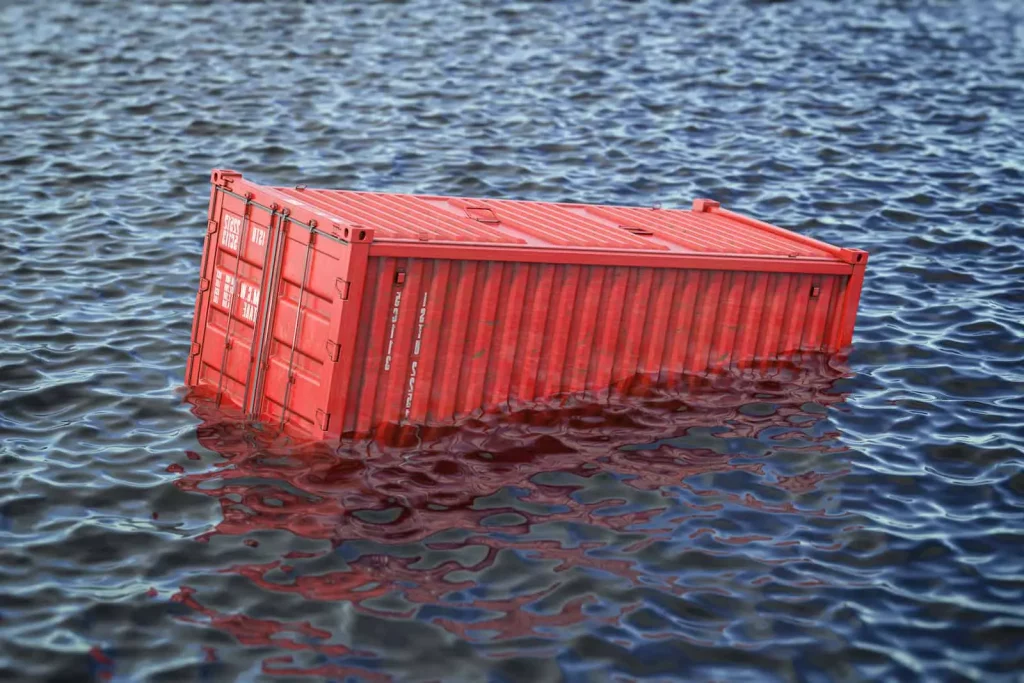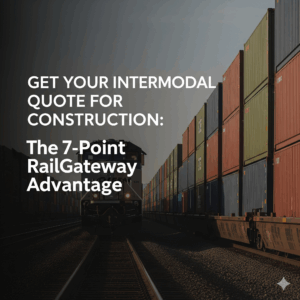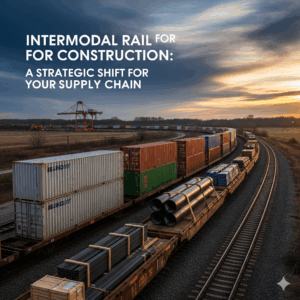This post was last updated on May 22nd, 2025
Powerful Strategies to Minimize Loss, Damage, and Claims with Intermodal Rail in 2025
In 2025, intermodal rail is playing an increasingly vital role in the global logistics chain, offering a cost-effective, eco-friendly, and secure method for transporting freight across vast distances. Businesses that embrace intermodal rail are unlocking scalable efficiencies, especially when shipments span multiple regions or require seamless transitions between rail and truck. However, maximizing the benefits of intermodal rail requires more than just booking space on a train – it calls for preparation, strategic insight, and a clear understanding of how to reduce risks associated with damage, delay, or claim disputes.
Intermodal rail, defined as the use of two or more modes of transportation (typically rail and truck) to move containers or trailers without handling the freight itself when changing modes, offers reliability and stability in an uncertain shipping landscape. But for businesses unfamiliar with this system, or those who have previously experienced claim issues, learning the best practices for mitigating risks is essential.
To prepare for success with intermodal rail in 2025, shippers must understand the nuances of packaging, container compatibility, route optimization, and proper documentation. Each of these elements plays a crucial role in protecting the shipment and ensuring that cargo arrives intact and on time. With transportation costs on the rise and supply chain pressures mounting, businesses cannot afford disruptions caused by poor planning or preventable mistakes.
Moreover, insurers are tightening standards when it comes to claims related to intermodal rail damage or loss. That’s why proactive steps, including better documentation, cargo tracking, security protocols, and damage mitigation plans, are no longer optional – they’re vital for success.
As we explore top strategies for success in intermodal rail shipping, we will address how companies can improve packaging resilience, select carriers with solid intermodal partnerships, leverage digital tools to track shipments, and document every stage of the journey. We’ll also show how building strong relationships with 3PL providers and maintaining updated knowledge of carrier liability policies can significantly reduce friction when claims do occur.
In this blog, you’ll discover proven steps to boost reliability, reduce losses, and ensure smooth claim processes for your intermodal rail shipments. By adopting these methods, your business can secure its cargo, reduce overhead, and thrive in the evolving logistics environment of 2025.
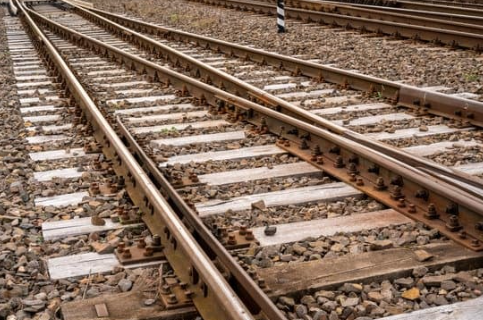
Table of contents
Intermodal Rail Freight
What is intermodal rail?
Intermodal rail freight is a highly efficient and reliable method of transporting goods using multiple modes of transportation – most commonly a combination of rail and truck – without handling the actual cargo during mode changes. This system relies on standardized containers that can be seamlessly transferred from one mode to another, such as from a train to a truck or ship, minimizing delays, reducing handling, and decreasing the risk of damage.
At its core, intermodal rail freight focuses on long-distance hauling, where rail provides the main segment of the journey due to its fuel efficiency, large capacity, and lower cost compared to road transport. Once the rail portion is completed, trucks typically handle the first-mile pickup and final-mile delivery. This combination allows shippers to take advantage of the strengths of each mode: the economy of rail and the flexibility of trucking. As businesses continue to prioritize cost savings and sustainability, intermodal rail freight has become an increasingly attractive logistics solution.
In 2025, intermodal rail freight is more advanced and streamlined than ever. Improved terminal automation, real-time tracking systems, and stronger partnerships between rail providers and trucking companies have made intermodal shipping a preferred option for companies moving consumer goods, electronics, automotive parts, and even some perishable items. The system supports greater supply chain resilience, and when paired with comprehensive shipping insurance and solid logistics planning, it significantly reduces risk, claims, and loss. For any business looking to scale efficiently while controlling costs and environmental impact, intermodal rail freight stands out as a powerful transportation strategy.
The evolution of rail intermodal traffic
The landscape of modern logistics is undergoing a rapid transformation – driven by rising demand for efficient, cost-effective, and environmentally sustainable freight solutions. Among these, intermodal rail has emerged as a cornerstone of long-distance transportation strategy, offering a compelling mix of scalability, reliability, and reduced environmental impact.
In recent years, both domestic intermodal rail and international intermodal rail shipping have gained significant momentum, particularly across North America. Businesses are increasingly leveraging rail networks to move high volumes of freight over long distances with greater efficiency and lower cost compared to traditional over-the-road trucking. And the stats don’t lie – according to the Association of American Railroads (AAR), intermodal traffic in the United States increased by 4.9% in 2021 compared to 2020. That year marked the second-highest intermodal volume ever recorded, just behind the peak levels of 2018.
This growth trend reflects the rising confidence in intermodal rail as a viable and strategic shipping option – not just for large enterprises but also for small and mid-sized businesses looking to scale smartly. The shift is being accelerated by factors like the driver shortage in the trucking industry, increased fuel prices, and a growing corporate emphasis on supply chain sustainability.
Intermodal rail offers distinct advantages over other transportation modes. Trains are significantly more fuel-efficient than trucks, capable of moving one ton of freight over 470 miles on a single gallon of fuel. This translates into substantial reductions in greenhouse gas emissions, making intermodal rail a preferred choice for shippers with ESG goals and carbon-reduction mandates. On top of that, railroads are less affected by highway congestion, driver regulations, and inclement weather, providing a more stable and predictable mode of freight movement.
However, despite these clear benefits, intermodal rail is not without its challenges. Cargo that changes hands across multiple modes – often moving from ship to rail to truck – faces increased exposure to risks like damage, delay, and misrouting. Unlike full truckload (FTL) freight, intermodal rail often involves complex transfers at terminals and ramps, where visibility can be limited, and handling procedures vary.
That’s why preparation is everything.
Understanding the nuances of intermodal rail logistics – from proper packaging and load securing to transit insurance and tracking – can dramatically reduce the risk of loss, damage, or claims. And preparation doesn’t start when your freight hits the terminal – it starts with having the right partnerships, tools, and SOPs in place long before your shipment rolls out.
Investing in route planning, weather analytics, cargo insurance tailored for rail, and real-time visibility tools are no longer optional – they’re essential for businesses looking to future-proof their supply chain in 2025 and beyond. The growing popularity of rail intermodal is not just a logistics trend; it’s a strategic shift toward smarter, more resilient freight networks.
As the volume and complexity of intermodal rail shipping continue to grow, staying ahead means doing more than just booking space on a train – it means understanding how to navigate this mode with precision, agility, and risk awareness.
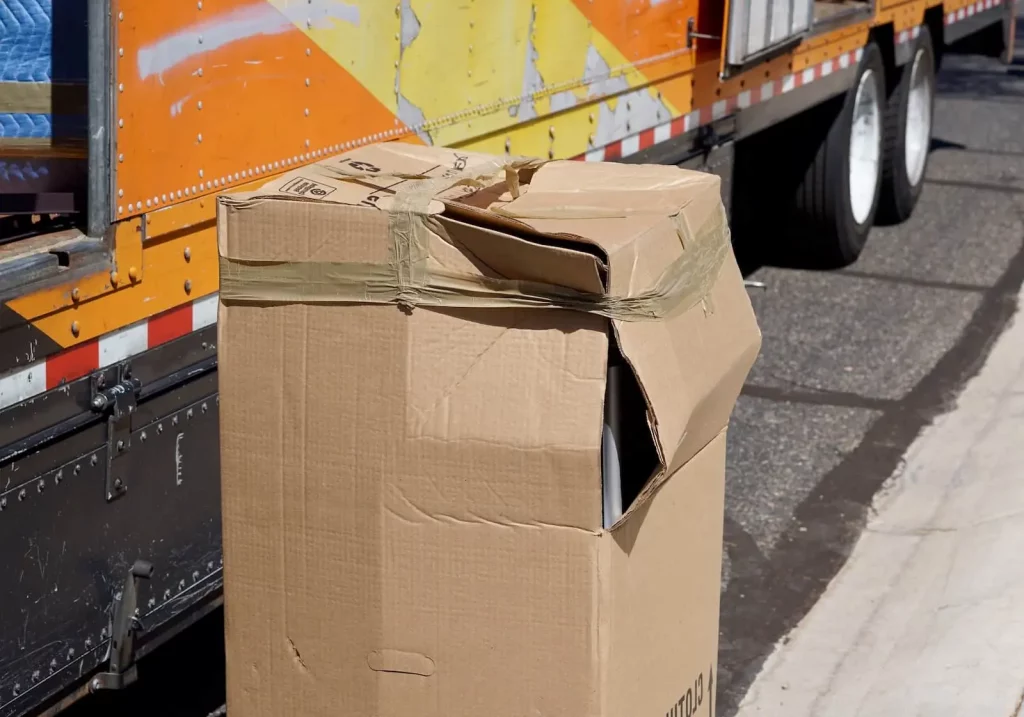
5 Steps in Reducing the Risk in Your Rail Supply Chain Intermodal Service
Shipping with rail is a safe and secure way to move freight. That said, you can’t prevent loss or damage all of the time, but you can be prepared for them when it does happen.
Step 1: Packaging & Containers
The first step you can take is knowing how your vendor handles your rail freight.
It’s generally the most straightforward instructions that have the biggest impact. When packing your items, you should constantly examine how your vendors handle your freight and how well they follow proper practices.
Shipments must be packed in a container that’s appropriate for their contents. Never exceed the maximum capacity of the gross weight of the container.
Double stacked containers have a maximum stack load. Stacking pins are used to organize and stack containers on top of one another. And each pin has a locking pin on one end and a plate.
Containers locked together can help minimize the chance that they will shift during transit. As a result, container stacking pins are usually worth the investment.
Lastly, any content susceptible to being damaged during transport should be wrapped or packed securely in the container.
Step 2: Shipment and rail transport labelling
The next step in preparing your rail freight for success is labelling.
Railroad companies require that all shipments are correctly labelled with the appropriate information to help identify and track shipments.
It’s also important to remember that light markings may fade with time, so labels on equipment or containers should be maintained and replaced regularly.
In addition to this, there are a few other labelling tips that can help reduce the risk of loss and damage when shipping with rail:
- Labels should not be placed on sealing tape or over a seam or closure.
- Cover old labels or remove them entirely
- Place an identical form of address information within the container for added security.
Step 3: Have the appropriate personnel in place
It’s imperative to employ skilled and experienced personnel and choose a trustworthy intermodal carrier to examine each shipment thoroughly.
- Is the correct number of containers accounted for?
- Is anything damaged?
- If boxes are open, are all the contents accounted for and in good condition?
It’s also best to ensure that inspections are done thoroughly before signing for any shipment.
Step 4: Choose the right lift equipment
Moving freight with the right equipment can make a real difference in your logistics.
A forklift is a valuable tool for any company that needs to stack containers.
Forklifts come in different types, depending on the height of your stacks and what kind of job you need.
If it looks like there might be any trouble handling larger loads, consider using cranes.
Step 5: Make sure you have a plan
When working with any form of intermodal volume to move cargo on freight railroads, it’s essential to know your rights as a shipper.
If cargo is misplaced or damaged, you’ll need to know the next steps and who to contact.
Stop the unloading process if there is any sign of damage and notify your carrier and insurance provider as soon as possible.
If there is extensive damage, your transportation company may demand that a surveyor be sent to assist with the unloading.
Railgateway is here to help you with any loss or damage questions that you may have. We are committed to providing our clients with reliable, safe, and cost-effective services.
It would help to familiarize yourself with your rail intermodal insurance policy to know what it entails. And take note of any emergency contact details just in case.
Being prepared ahead of time can help ensure a smooth, quick recovery when issues arise, so be sure to have a plan and an intermodal transportation partner you can trust!
Common causes of cargo damage:
- Packing Carelessly
- Labels and markings that are incorrect
- Unsafe movement of mechanical handling equipment
- Incorrect weight loads & lifting gear
Shipping by rail offers several advantages over multiple modes of transportation. It’s generally faster, more cost-effective, and can be safer with the proper precautions.
Conclusion
Preparing for successful intermodal rail operations in 2025 isn’t just about knowing the basics – it’s about implementing best practices that prevent damage, minimize loss, and reduce insurance claims. Companies that treat shipping as a strategic function, rather than a back-end cost center, will be better positioned to manage their logistics with confidence and protect their bottom lines.
Using intermodal rail can dramatically cut shipping costs and carbon emissions, but it demands intentional planning and tight quality control. Businesses that adopt innovative load-securing practices, routinely inspect containers, and use route risk assessments to predict potential disruptions are leading the way in operational excellence.
Documentation, in particular, must not be overlooked. Accurate, detailed, and timestamped paperwork supports faster insurance settlements and stronger legal protection when disputes arise. Coupling that with digital tracking and real-time communication with intermodal partners creates a resilient system that keeps cargo moving safely.
In addition, continuous learning about regulatory shifts, terminal requirements, and carrier changes is vital. Your 2025 strategy should involve regular updates to internal shipping policies and training programs for your logistics team to stay ahead.
Now is the time to invest in proven tools, technology, and partnerships that help streamline intermodal rail shipping. Whether you’re scaling your shipping volume, reducing claim disputes, or minimizing the risk of freight damage, the strategies covered here will serve as a foundation for long-term success.
In conclusion, intermodal rail offers tremendous value – but only for those who prepare wisely. Make 2025 the year you transform your shipping outcomes by applying the best practices, avoiding costly mistakes, and optimizing every part of the shipping process. When done right, intermodal rail is more than a logistics solution – it’s a powerful advantage for your business.
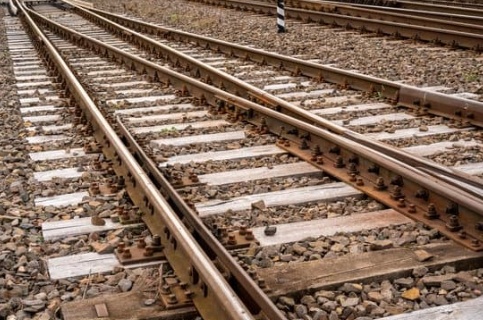
FAQ
- What is intermodal rail and how does it work?
Intermodal rail involves using trains in combination with trucks or ships to move containerized freight, optimizing long-haul efficiency. - Why choose intermodal rail over full truckload shipping?
Intermodal rail is often more cost-effective, environmentally friendly, and efficient for long-distance hauls than truckload shipping. - What are the key risks associated with intermodal rail?
Risks include cargo damage during transfers, container misplacement, and delays at terminals. - How can I reduce damage claims in intermodal rail shipments?
Proper packaging, load securing, and carrier selection are essential to minimize damage during intermodal rail transit. - What kind of insurance is recommended for intermodal rail freight?
Comprehensive cargo insurance is vital to cover risks associated with multi-modal transitions in intermodal rail shipping. - Are intermodal rail shipments trackable in real time?
Yes, many intermodal rail carriers offer GPS and digital tracking for real-time shipment visibility. - What types of cargo are best suited for intermodal rail?
Non-perishable goods, packaged consumer products, automotive parts, and retail freight are ideal for intermodal rail. - Do I need special containers for intermodal rail transport?
Standard ISO containers are typically used, and they must meet intermodal rail safety and handling requirements. - How do claims work for damaged cargo on intermodal rail?
Claims must be filed with clear documentation, including condition reports and shipping details at each transfer point. - Can small businesses use intermodal rail services?
Yes, through freight forwarders or 3PLs, small businesses can access intermodal rail without needing to manage full container loads. - What are the environmental benefits of intermodal rail?
Intermodal rail produces significantly fewer greenhouse gas emissions than long-haul trucking. - How long does intermodal rail shipping take in Canada?
Transit time varies by route but can range from 2–7 days depending on the origin, destination, and rail provider.
Additional Resources
- Transport Canada – Freight Rail
- CN Rail – Intermodal Services
- CPKC Intermodal Services
- Federal Railroad Administration (FRA)
- Bureau of Transportation Statistics – Intermodal Freight
- Association of American Railroads
- UIC Intermodal Transport
- American Association of Port Authorities – Rail Access
- JOC.com – Intermodal Rail News
- World Bank – Rail Freight Logistics
How We Can Help
For businesses looking to optimize their freight shipping with reliable, efficient, and cost-effective solutions, RailGateway.ca is your trusted partner in intermodal logistics. Whether you’re new to freight trains or want to enhance your existing supply chain, our team of intermodal experts is ready to guide you every step of the way.
Contact RailGateway.ca today for a free quote or to speak directly with one of our experienced intermodal specialists. Let us help you unlock smarter, smoother shipping solutions tailored to your unique needs.
Visit RailGateway.ca or call us to get started on transforming your freight shipping strategy in 2025 and beyond.

